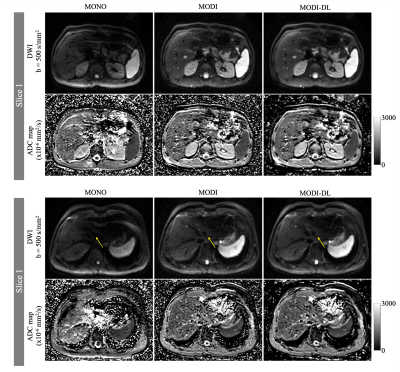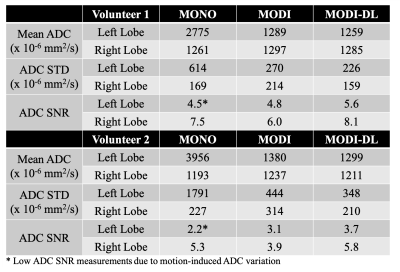Yuxin Zhang1,2, Arnaud Guidon3, Xiaoili Zhao4, Gaohong Wu4, Hua Li4, Ruiqi Geng1,2, and Diego Hernando1,2
1Medical Physics, University of Wisconsin Madison, Madison, WI, United States, 2Radiology, University of Wisconsin Madison, Madison, WI, United States, 3GE Healthcare, Boston, MA, United States, 4GE Healthcare, Waukesha, WI, United States
1Medical Physics, University of Wisconsin Madison, Madison, WI, United States, 2Radiology, University of Wisconsin Madison, Madison, WI, United States, 3GE Healthcare, Boston, MA, United States, 4GE Healthcare, Waukesha, WI, United States
This work demonstrates the feasibility of combining motion-robust diffusion MRI with a denoising deep learning reconstruction for improved DWI of the liver, including high motion robustness and high SNR.

Figure 2. Example images of MONO, MODI and MODI-DL in another volunteer. The yellow arrows indicate the left lobe of the liver where MONO leads to severe shading and signal dropouts in DWI and bias (overestimation) in ADC maps. MODI is able to mitigate the signal dropouts with consistent ADC throughout the liver. However, MODI DWI had lower SNR compared to MONO. By combining MODI with the DL reconstruction, MODI-DL DWI shows higher SNR and is able to maintain excellent motion-robustness throughout the liver.

